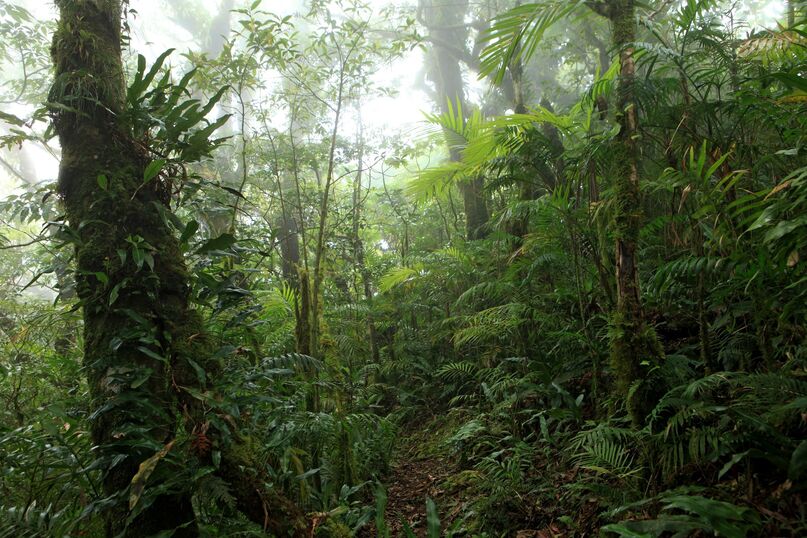Carbon sequestration

Tropical forests act as long-term carbon reservoirs, potentially over decades and centuries. Photo: G. Sanchez-Vigil
Tropical forests sequester a considerable volume of carbon via photosynthesis and store it in vegetation and soils. Well-managed, they act as long-term reservoirs, potentially storing carbon for decades, even centuries.
Carbon can be sequestered through forest growth, reforestation and restoration and in agroforestry and silvopastoral systems. Sustainable forest management ensures that forest carbon stocks are maintained for the long term by avoiding degradation. Sustainably harvesting forests to produce wood products can also increase the global carbon store.
There is considerable potential for more carbon sequestration in the tropics, including by restoring degraded forest land and through sustainable wood production. In many cases, realizing this potential will require greater clarity on land and carbon tenure, ensuring that jurisdictions and local people benefit from the forests and trees they establish and manage, and legal and sustainable wood supply chains. ITTO assists its member countries in the tropics to meet these and other challenges through policy development, capacity building and field projects.
Related links
-
Technical guide on the quantification of carbon benefits in ITTO projects
(report published 2015)
-
Wood product accounting and climate-change mitigation projects involving tropical timber
(report published 2012)